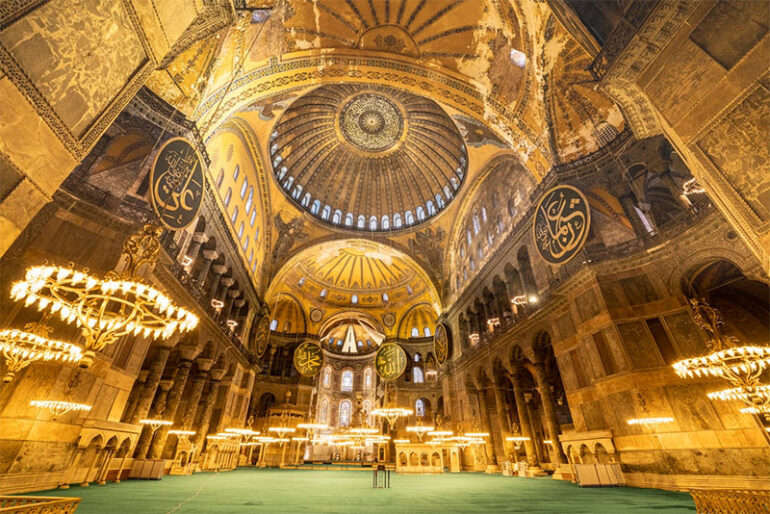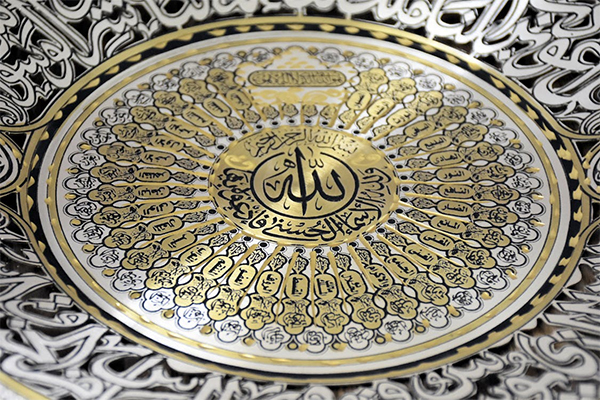Islamic art is fundamentally based on geometry, carefully spun into its fabric to produce a visual language that appeals to both aesthetic beauty and deeper spiritual relevance. Beyond basic ornamentation, this art style reflects the balance and order of the cosmos by expressing difficult mathematical ideas. Artists lead spectators into a contemplative world where the interaction of forms and shapes exposes great philosophical significance as they interact with geometric patterns, therefore bridging the distance between the tangible and the divine. Geometrically speaking, Islamic art is a dynamic statement of spiritual inquiry and cultural identity.
The Influence of Geometry in Islamic Art
Islamic art is created using geometry, which functions as a basic structure going beyond simple adornment. Inspired by mathematical ideas, artists painstakingly used complex patterns to communicate philosophical and spiritual implications. Using tessellation and symmetry shows a great awareness of harmony and balance, so encouraging spectators to consider the infinite. Often seen in mosques, manuscripts, and textiles, these designs create a visually striking and profoundly moving language. A pillar of Islamic artistic expression, geometric forms not only display technical ability but also reflect the unity and order inherent in the universe, therefore attesting to technical mastery.
Sacred Geometry and Symbolism in Islamic Art
A major component of Islamic art, sacred geometry links mathematical ideas with spiritual meaning. Patterns like the circle, square, and star represent the interdependence of all creation by symbolizing the divine and the universe, therefore transcending ordinary aesthetic preferences. Repeating these forms generates an infinite sensation that invites reflection on God’s eternal character. To accentuate the spiritual environment of holy places, artists frequently included these geometric motifs into calligraphy, mosaics, and architectural designs. This mix of symbolism and art helps viewers to investigate the secrets of life by visual depiction, therefore strengthening their sense of faith.
The Role of Precision and Repetition in Islamic Geometric Patterns
Essential features of Islamic geometric designs, precision and repetition highlight the painstaking work of artisans. Every design is painstakingly created, frequently with reference to a compass and straightedge to guarantee consistency and precision. This meticulousness strengthens the underlying mathematical ideas as well as improves the aesthetic appeal. These patterns’ repeating character generates a rhythmic flow that evokes harmony and order by means of which from tile work to illuminated manuscripts, these designs abound in several media and are evidence of the talent and dedication of craftspeople. This accuracy finally encourages viewers to value structural and form’s beauty.
Modern Interpretations and Applications of Islamic Geometric Art
Traditional Islamic geometric art is becoming more and more inspiring to modern artists and designers, who adapt its ideas for their works. This rebirth shows up in architecture, graphic design, and fashion as complex patterns are modified to fit modern tastes. Technological innovations like digital design tools let one explore intricate geometric designs traditionally labor-intensive to build using less effort. These contemporary uses not only honor the rich legacy of Islamic art but also help to close cultural gaps and inspire fresh respect of geometry’s beauty and relevance in visual expression. The combination of originality and legacy still motivates fresh generations of artists.
Geometric ideas left behind in Islamic art draw attention to a special interaction between mathematics and spirituality, therefore encouraging further study and rereading. Modern artists who appreciate these classic styles not only respect the rich cultural legacy but also modify it to appeal to current sensibilities. This dynamic development emphasizes the timeless importance of geometry as a medium for artistic expression, therefore developing linkages between many civilizations and generations as well as a greater respect of the complex beauty found inside disciplined forms.
Photo Attribution:
1st & featured image by https://www.pexels.com/photo/majestic-golden-interior-of-mosque-13234206/
2nd image by https://www.pexels.com/photo/gold-and-silver-round-wall-decor-7427800/

